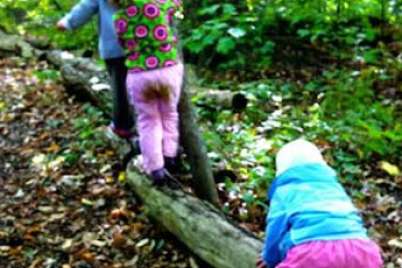
Toronto’s chief planner talks about creating a “walkable” city
As a child, Jennifer Keesmaat walked to and from school every day. “We all walked, rain or shine. It wasn’t a point of discussion. It was just something that we did,” says Keesmaat, now the City of Toronto’s Chief Planner and Executive Director.
“It took 15 minutes to get to school, but an hour to get home. And that hour was a pretty good thing.”
She and her friends talked. They learned about their neighbourhood. And they played in a little creek along the way.
“We’d throw stuff in it, rocks, whatever. Sometimes we’d try to cross it. In the spring, we’d catch guppies in it.”
Those experiences — safely walking, exploring — are what make a neighbourhood great for kids, she says.
Keesmaat — named last year by Maclean’s magazine as one of Canada’s most influential people — doesn’t name specific Canadian cities as being better and more walkable for kids than others.
But she does say that within a city, there can be good and bad areas when it comes to walkability and children. (She’s given a Ted talk on the subject, too, which you can watch below.)
“There are places with great parks, but kids don’t do anything in their neighbourhood because they’re driven everywhere,” she says.
“Here in Toronto, for instance, there are many places that are good, where there are great parks, and a lot of freedom for kids,” she says. “
Jennifer Keesmaat

Ranked in 2014 as one of Toronto’s 50 most influential people by Toronto Life magazine, Jennifer Keesmaat has set two goals for herself as the city’s Chief Planner: make urban planning more transparent, and engage communities in the process. Read her tips on how to promote your own kid-friendly, walkable community.
But there are places that are terrible, too, she notes, places where children don’t do anything in their neighbourhood.
Sometimes that’s a family choice, she notes. A family would rather drive their kids everywhere than interact with the community they live in.
But sometimes it’s a case “where nothing is within walking distance, combined with what I would call an unfortunate era in city planning where you have exclusive enclaves of only houses,” Keesmaat says.
“If you want a walkable neighbourhood, you need somewhere to go. If you have no corner store, no coffee shop, there’s no reason to go out.”
For instance, growing up in Hamilton, Ont., Keesmaat says she and her friends used to go door-to-door, collecting empty bottles to exchange for candy at the corner store.
“Imagine that today, kids asking for empties door to door,” she says. “Most children don’t have the freedom to do that kind of thing.”
It helps if kids have somewhere they can walk to. A good park with a playground, for example, where kids can meet casually and create their own communities. Keesmaat’s own neighbourhood has lots of kids who walk to and from school. They get to know each other, and over time, the parents have gotten to know each other, too.
A certain amount of freedom is essential to developing well-rounded, community-minded, street-smart and aware kids, she notes.
Keesmaat, who has two children, says her teenage daughter walks home from school every day. Some days, that means making an adjustment to the amount of books she brings home; perhaps she photocopies a page from a textbook, so she doesn’t have to pack home the entire heavy book.
She is only allowed to choose one after-school activity, too, so that no one is racing around the city frantically after work and school.
The result? Keesmaat’s family has more quality family time together, including family dinners. “Is she going to be an opera singer? No, that’s off the books,” Keesmaat says with a laugh.
“But is she a very happy and well-adjusted child? Yeah, she is. And really, that’s what I think we all want for our kids.”






This is awesome! As a Walking School Bus Coordinator for my school district, I will be using this to educate the people in our community. We NEED to be educating parents and students about the benefits of walking to school, including what walking does for the brain.